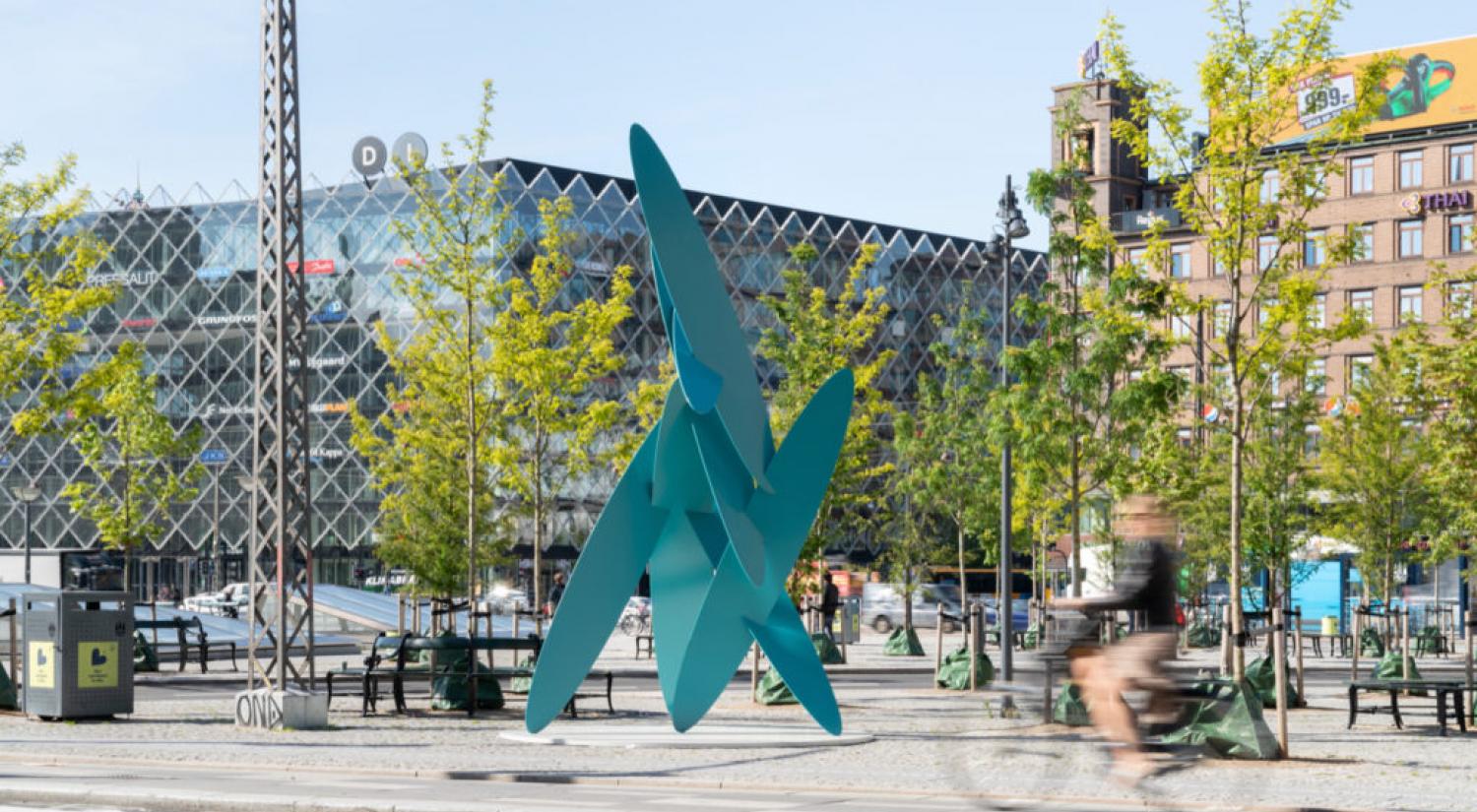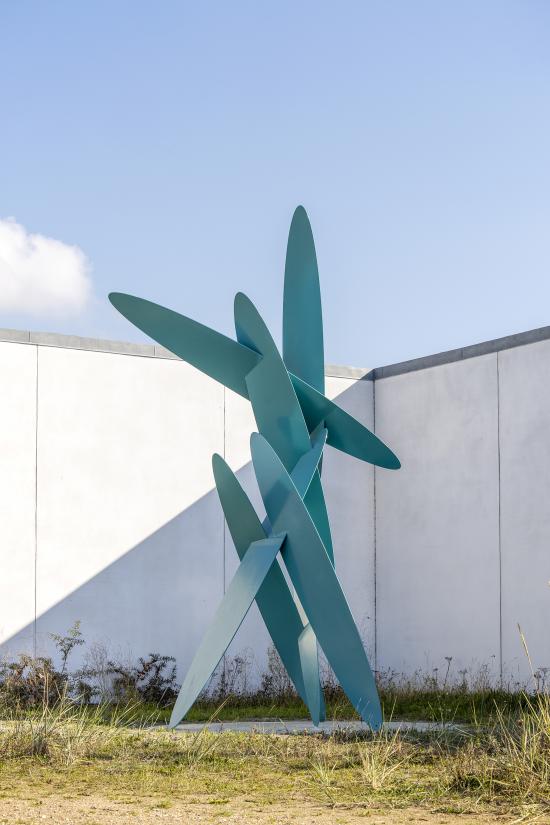Amalie Jakobsen’s art is characterized by an abstract, monumental expression and a focus on environmental issues. She combines clean lines and bright colours with urgent messages about catastrophic climate change and apocalyptic collisions in sculptures that call on us to show care for our common future and the planet we call home.
A system that is out of kilter
Suffocating Air is a light but chaotic structure constructed of blue-green, elliptical steel plates painted with diatom algae powder. Like shoots on a plant, the plates appear to have grown in a random pattern, forming a structure that makes the sculpture’s balance seem precarious. The elliptic form refers to planetary orbits around the sun, but the paths cross and intersect and appear to have been knocked off course. In combination with the blue-green diatom algae coating, the structure reminds us that both major and minor forces are at play in the cycles and systems that form the basis of life – the solar system as well as the earth’s ecosystem. With its alarming title and unsettled elliptic orbits Suffocating Air points to urgent issues related to sustainability and natural cycles gone awry.
Carrying Capacity
Suffocating Air is a principal piece in Amalie Jakobsen’s oeuvre. It was included in her solo exhibition Carrying Capacity in Politikens Forhal (the exhibition space at the daily newspaper Politiken in central Copenhagen) earlier this year. The exhibition featured four sculptures, all based on ellipse forms. Three of the sculptures were displayed inside Politikens Forhal, while the almost six-metre-tall Suffocating Air was placed in City Hall Square in front of the venue. Carrying Capacity is an ecological term, referring to the number of individuals of a given species an environment can sustain, be it algae in a marine environment or human beings in a city. In the future, Suffocating Air will be on display in ARKEN’s sculpture park.
About Amalie Jakobsen
Amalie Jakobsen (b. 1989) lives and works in Copenhagen and Berlin. She graduated from Goldsmiths, University of London, in 2014. She expresses herself in form, colour and space in materials ranging from textiles and latex to hard industrial materials, such as steel and aluminium. She treats the industrial materials with natural substances, such as sand, soil and algae dust; elements that add to the sculptures’ thematic focus on the climate crisis. Her expression is abstract and postminimalist in works of art that interact with the viewer through shifts in balance and bright colours.




